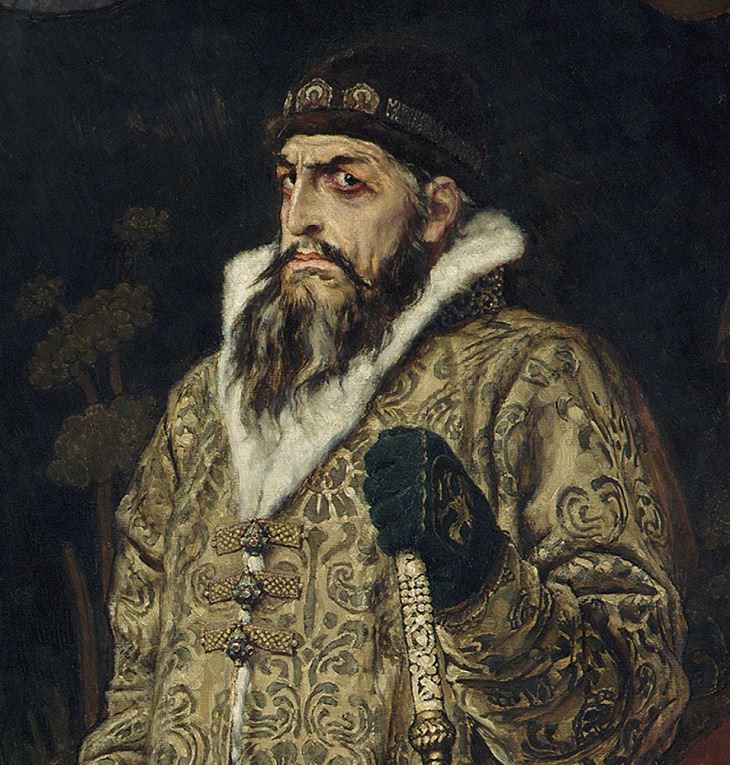
Ivan the Terrible, who married Anastasia Romanov
The fortunes of the Romanovs would change when a Romanov noblewoman by the name of Anastasia had managed to land a marriage contract with tsar Ivan, nicknamed “The Terrible”. But the good luck did not last long, as the brutal Ivan killed their eldest son in a fit of rage, and the remaining heir to the throne, Feodor, was an inept king and failed to secure an heir of his own. In the wake of his death, Feodor’s brother-in-law and thorn in his side managed to seize power over Russia, and to consolidate his rule, he exiled all of the Romanovs to remote corners of Russia, so that they could not contest his rule.
But the usurper’s rule did not last long, and after his death by stroke, his son was assassinated and Russia was plunged into a period of anarchy and short-lived pretender kings.
Finally weary of the chaotic game of royal hot potato, the Russian parliament of nobles elected the exiled Michael Romanov, a cousin of the late tsar Feodor, as the first Romanov ruler of Russia, and from that point on, the Romanovs would rule uncontested (save by members of their own family) until 1917.
Under the rule of Michael, Russia extended its borders immeasurably by conquering Siberia, but it was not until the reign of his grandson that Russia truly became a superpower.
The Great Reformer
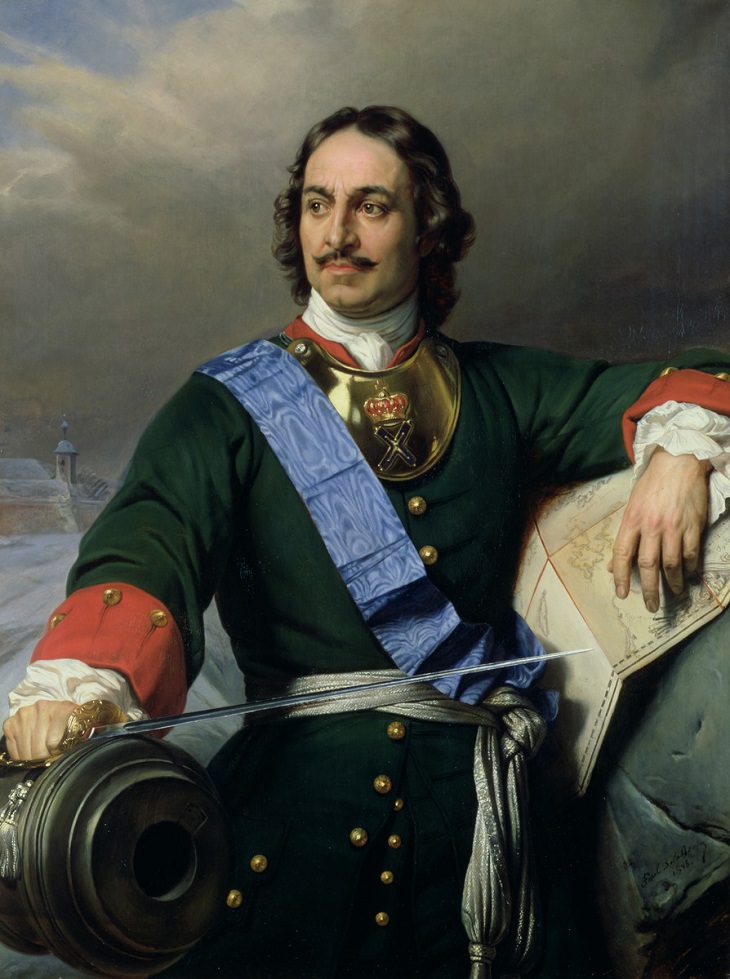
Peter the Great
Like many other tsars, Peter the Great was not born the heir to the throne. He was born to the tsar’s second wife, and thus, had two half-brothers in front of him in the line of succession. The eldest brother, Feodor III, was well-educated but infirm, suffering from a paralyzing illness from birth, and only managed to survive six years on the throne.
The other half-brother, Ivan V, was not only infirm but also addle-minded. Because of this, the council of noblemen preferred to crown the 10-year-old Peter. This did anger Ivan’s sister Sophia, who managed to sway members of Russia’s elite military corps to help her stage a revolt. By the end of the bloody affair, it was agreed that Peter and Ivan will rule jointly with Sophia as the acting regent during the two tsars’ minority. In effect, Sophia ruled Russia.
For much of his childhood, the arrangement suited Peter, who was more concerned with playing with his toys, but at the age of 17, after two failed war campaigns against the Ottoman Empire in Crimea, he felt that Sophia’s status was sufficiently weakened to wrest the power away from her. Though his bid for power went along with quite a few hitches, including hiding in a monastery, he eventually managed to oust his older half-sister and gain control of the country.
An avid lover of boats since childhood, Peter realized that any hope of defeating the Ottomans lay in gaining control of the Black Sea and establishing maritime superiority. To that end, he started the construction of a large navy with which he managed to capture the Ottoman port town of Azov, but he understood this was not enough to defeat the Turks.
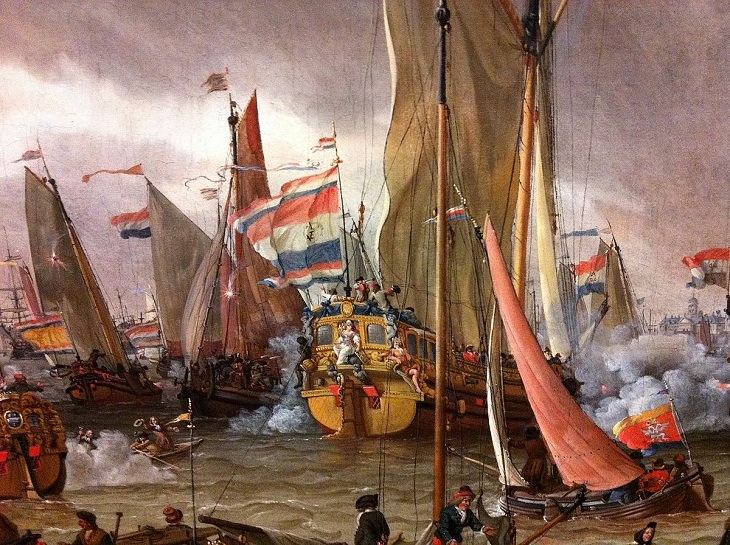
The Dutch Navy holding a mock battle in honor of Peter
To that end, Peter went on an 18-month-long journey to Western Europe, attempting to seek allies. Unfortunately, he found the various kingdoms of Europe were otherwise preoccupied with their wars, and could ill afford to start a new one against the Turks, but the journey wasn’t fruitless, per se. His stay in Amsterdam left an incredibly profound impression on Peter, who got to advance his knowledge of shipbuilding, learning from the masters of what was then one of the greatest naval forces in the world. Later, in England, he learned much about city-building, something that would come in handy a few years later.
Upon returning, Peter established a new capital, naming it after his patron saint: Saint Petersburg, widely considered the first European city in Russia. Peter would also manage to completely shatter a Swedish invasion into Russia, firmly establishing Russia as a military power to be reckoned with.
On top of all of his military achievements, Peter would go on to pass many social reforms aimed at modernizing Russia and catching up to Western Europe, including compulsory education in the sciences for the children of all aristocrats and governmental functionaries.
Yet, for all of his reforms, in one thing Peter the Great fell short, like many of his predecessors: succession. Peter detested his first wife and had her sent to a convent. Unfortunately, she was the mother of his sole male heir, Alexei, who never forgave him and subsequently refused any attempt to educate him about governing and tried to defect to Austria. Alexei ended up imprisoned for treason, where he was tortured to death. All of Alexei’s friends, associates and servants were put to death, and only Alexei’s wife, son, and daughter were spared.
A Return to Bloody Ways

Ivan VI, the infant tsar
And so it was, that after Peter’s passing, his sole heir was a grandson who was far too young, whom Peter heavily disliked and made no effort to prepare him for ruling. It is possible that Peter II might have grown into a fine tsar regardless, but history would have it differently, and he died of smallpox at the age of 14, two years after being crowned.
With his death, and no other male Romanov heir, the line was effectively extinct on the male side, and the crown went to the daughter of Peter the Great’s mentally-disabled half-brother, Anna.
Anna continued many of her uncle’s social reforms, investing heavily into the Russian Academy of Science and putting an emphasis on the arts, but she, too failed to produce an heir, and in an effort to block descendants of Peter from the throne, she proclaimed her German grand-nephew, Ivan VI, a mere infant of 1 year, her heir. This proved to be the child’s doom.
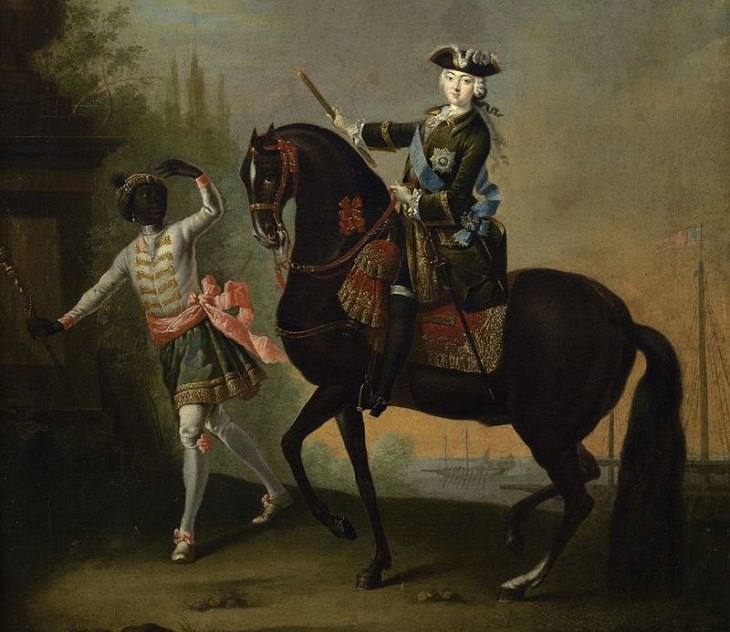
Empress Elizabeth with a black servant in full military garb
A short time into the infant’s reign, the winter palace was raided by soldiers on the command of Peter the Great’s daughter, Elizabeth, who claimed the tsardom to herself. Young Ivan was placed in house arrest, where he would live out the rest of his short and miserable life.
The coup Elizabeth staged would set the tone for much of her reign, as she was a military-minded empress who opposed the encroaching foreign influence on the Russian court. But she, too, was childless, and ironically enough, chose a German nephew of her own to be her heir, Peter III. And while she attempted to treat the deposed Ivan with courtesy, she put out an order that, if at any point Ivan would attempt to escape, he should be killed.
The Greatest Since Peter
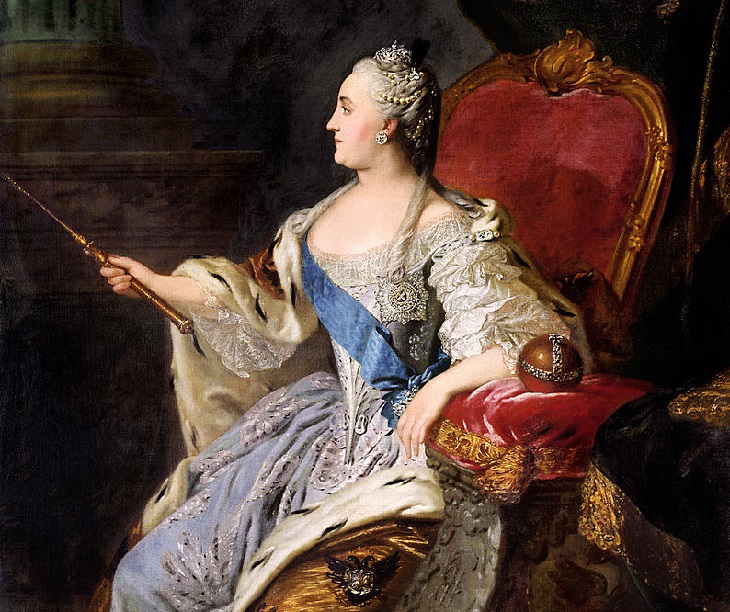
Catherine the Great
Though Peter was a grandson of his great namesake through his mother, he felt a much closer affinity to his German parentage and spoke very little Russian. As a ruler, he tried to ingratiate himself on the enemies of Russia, namely, the nascent Prussian nation.
Meanwhile, something completely unexpected happened: Peter’s wife Sophie, a completely German woman, appeared far more interested in Russian culture and the interests of the Russian Empire. The tsarina not only bothered to study Russian until she gained perfect fluency (while retaining a bit of an accent), she actually converted from the Protestant faith to Russian Orthodoxy, taking the new name of Catherine.
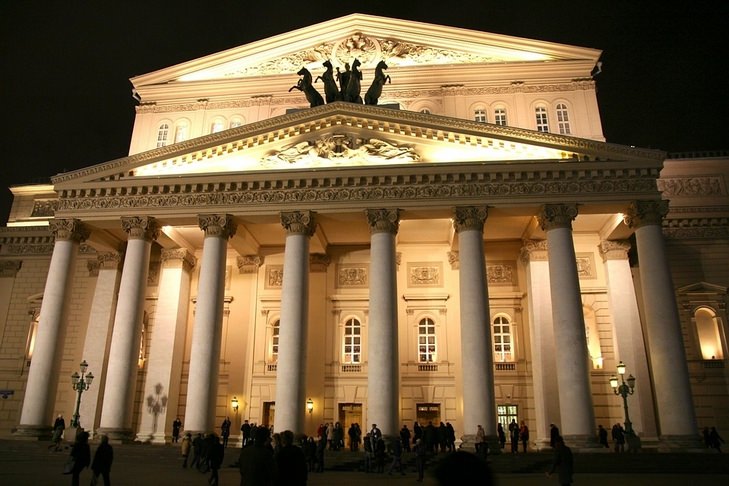
The Bolshoi Theater, established in Catherine's times
Peter’s love of consorting with foreign German courtiers became a serious issue that put a rift between the tsar and his wife, and six months after Peter III was crowned, Catherine led a military raid against her husband, arresting him and forcing him to abdicate the crown in her favor. A mere eight days later, Peter was assassinated, but Catherine’s complicity in her husband’s death could not be proven. Two years into her reign, opposition forces tried to rescue the imprisoned Ivan VI, upon which the late tsarina Elizabeth’s order was followed through, and the boy prisoner was summarily executed.
Catherine, the only Russian ruler besides Peter I to gain the sobriquet “the Great”. In many ways, she continued Peter’s legacy, completing Peter’s war against the Ottoman Empire for dominance of the Black Sea and his efforts to establish Russia as an enlightened nation through patronage of the arts and education. During her reign, the first institute for the higher education of women was established, the Bolshoi Theater was established, and the Hermitage Gallery was founded.
A Bloody End to a Bloodsoaked Line
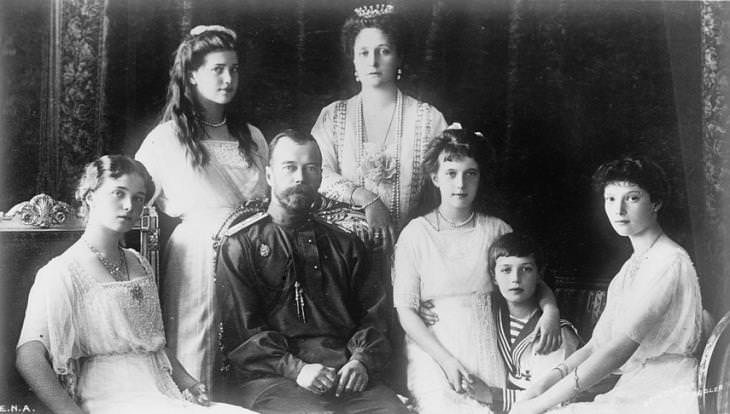
Tsar Nicholas II and his family, last of the Romanov line
After Catherine’s death of a stroke, the Romanovs slowly but surely drifted into typical decadence which included extreme class inequality and harsh stifling of dissent through the use of a secret police force, the Okhrana. The rot reached its apex during the reign of the last tsar, Nicholas II, the coronation of which saw a colossal festival for the benefit of the people which resulted in a mass stampede that took the lives of 1,389 people. Other sins of the time included the secret police penning and distributing the harshest example of blood libel against Jews in history: the Protocols of the Elders of Zion, a forgery which incited incredibly violent pogroms.
It was in this environment of peasant destitution and starvation that tsar Nicholas II decided to engage his armies in the worst military affair to date: World War I. Compounding war on the poverty of the general populace did not go well with the people, and after three years of terrible war, a major revolt broke out which ended with the abdication and later execution of the tsar and his family.
The tsar was survived only by his cousin, the Grand Duke of Russia who was now the sole remnant of the Romanov line. His descendants still claim to be the rightful rulers of Russia, a claim that goes largely ignored.

 Ivan the Terrible, who married Anastasia Romanov
Ivan the Terrible, who married Anastasia Romanov Peter the Great
Peter the Great  The Dutch Navy holding a mock battle in honor of Peter
The Dutch Navy holding a mock battle in honor of Peter Ivan VI, the infant tsar
Ivan VI, the infant tsar Empress Elizabeth with a black servant in full military garb
Empress Elizabeth with a black servant in full military garb Catherine the Great
Catherine the Great The Bolshoi Theater, established in Catherine's times
The Bolshoi Theater, established in Catherine's times Tsar Nicholas II and his family, last of the Romanov line
Tsar Nicholas II and his family, last of the Romanov line